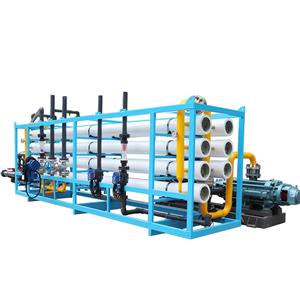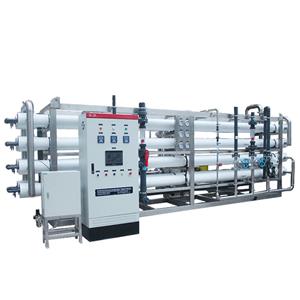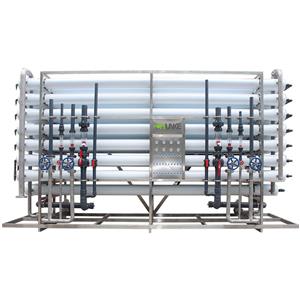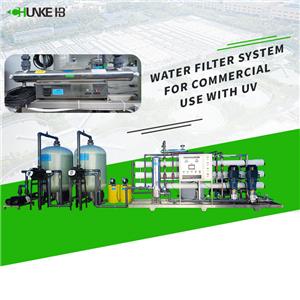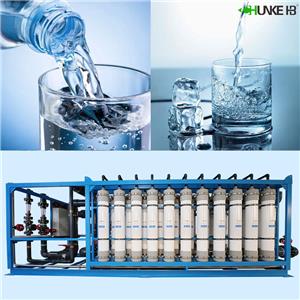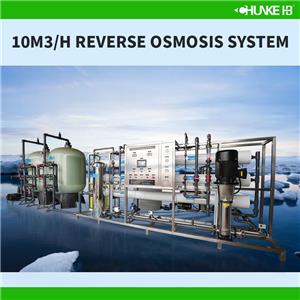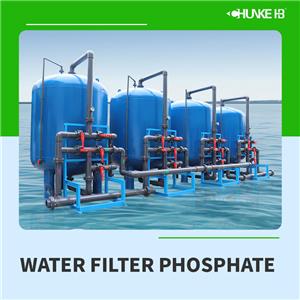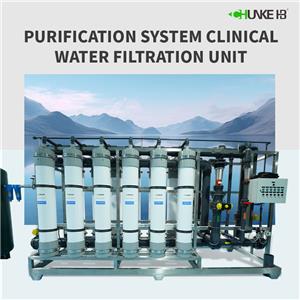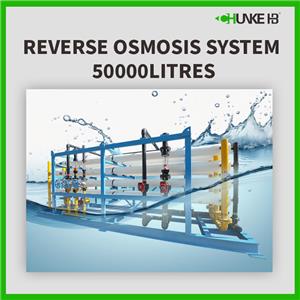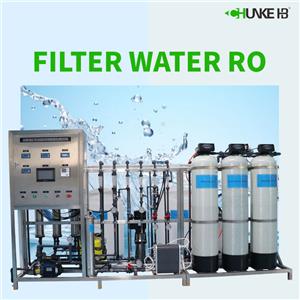-
09-27 2024
What kind of water filter can filter out chlorine and fluoride?
The reverse osmosis system applies pressure to force water molecules to pass through a semi-permeable membrane, while impurities such as chlorine and fluoride are trapped on the other side of the membrane and removed.
-
09-27 2024
Why do saltwater reverse osmosis use polyamide membranes?
Polyamide membranes have extremely high salt separation capacity and can intercept most of the dissolved salts. The salt content of the effluent can be as low as 5-10 ppm (parts per million), which is far lower than the requirements of drinking water standards.
-
09-26 2024
What is a water treatment machine for dialysis? Why is reverse osmosis water used in dialysis?
A water treatment machine for dialysis refers to a high-purity water treatment system used to prepare dialysis fluid. Dialysis fluid is a key medium for removing metabolic waste and excess electrolytes from the patient's body, and the water in the dialysis fluid must be highly pure.
-
09-25 2024
What is a commercial water filtration system with UV?
A commercial water filtration system with UV refers to a traditional water filtration system with a UV disinfection module added. UV disinfection is to kill bacteria, viruses, molds and other pathogenic microorganisms in the water by short-wave ultraviolet rays emitted by ultraviolet lamps.
-
09-23 2024
What is ultrafiltration for drinking water? Is it a form of reverse osmosis?
The pore size of the reverse osmosis membrane is usually around 0.0001 microns, which allows it to remove almost all soluble salts, organic matter, metal ions and other soluble contaminants. The pore size of the ultrafiltration membrane is larger, about 0.01 to 0.1 microns.
-
09-20 2024
What is a 10 cubic meter per hour reverse osmosis system?
A 10 cubic meter per hour reverse osmosis system, in simple terms, is a device that can treat 10 cubic meters (ie 10,000 liters) of water in 1 hour. It usually consists of multiple components, including a pretreatment system, a reverse osmosis membrane, a pressure pump, a control system, etc.
-
09-19 2024
Can water filters remove phosphates?
Reverse osmosis system is one of the most effective water filtration methods for removing phosphates. The pore size of the RO membrane is extremely small (usually around 0.0001 microns), which can prevent most soluble substances from passing through, including most ions including phosphates.
-
09-19 2024
What kind of water filtration system is used in hospital clinics?
The following are several water filtration systems commonly used in hospitals: Reverse osmosis (RO) system Ultrafiltration (UF) system Deionized (DI) water system Activated carbon filtration system Ultraviolet (UV) disinfection system
-
09-17 2024
Which industries need a 50,000 L/h Reverse osmosis system?
The treatment capacity of 50,000 liters per hour is a moderate size for large power plants, which can provide a continuous supply of pure water to boilers, ensuring power generation efficiency and long-term stable operation of equipment.
-
09-17 2024
Is the water filtered by all filters as good as water from reverse osmosis?
RO systems typically have removal rates above 90%, and can even reach 99% for some contaminants. Mechanical filters, activated carbon filters, and ultrafiltration systems typically have lower removal rates, especially for dissolved substances and small organic molecules.

